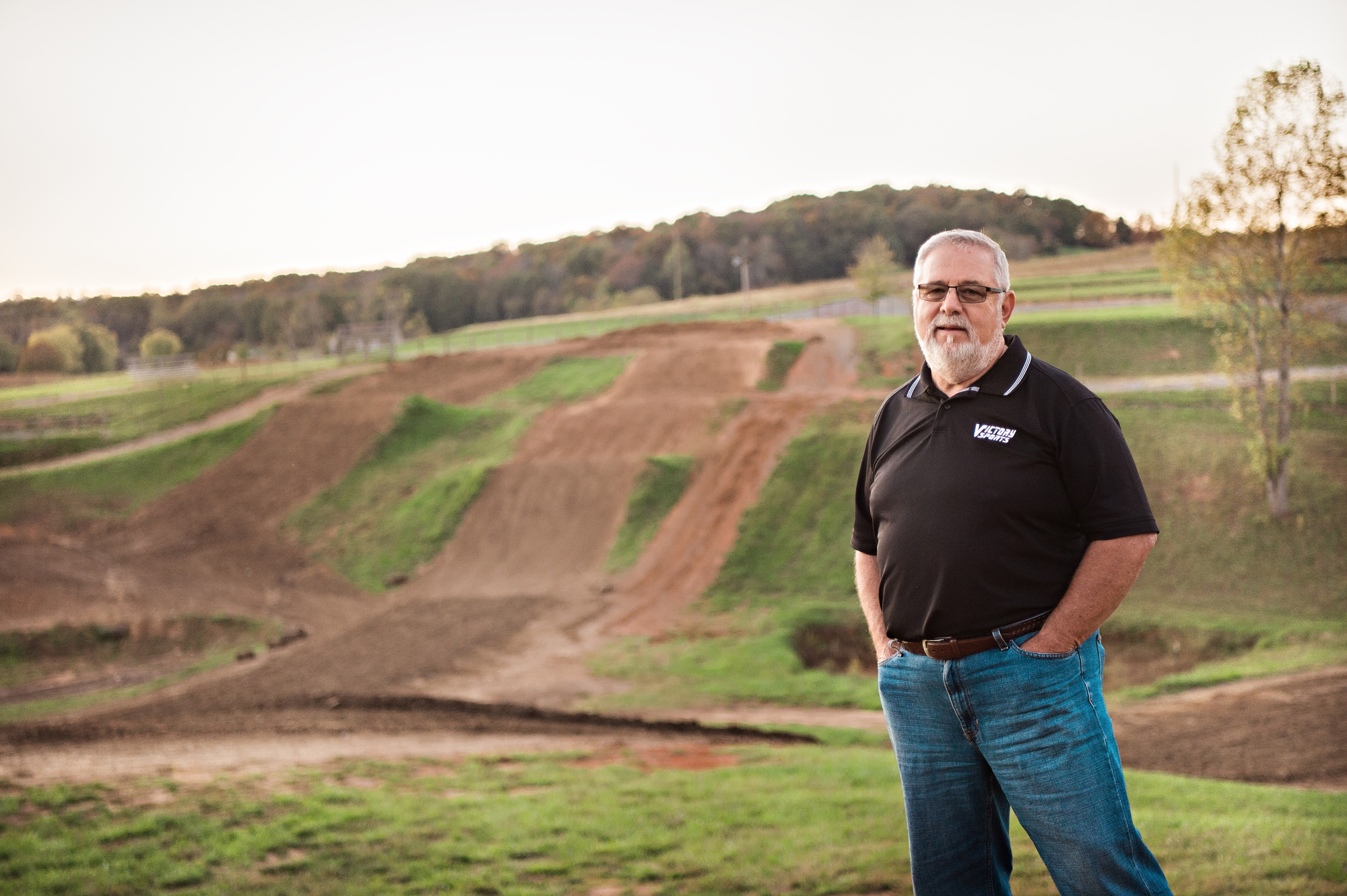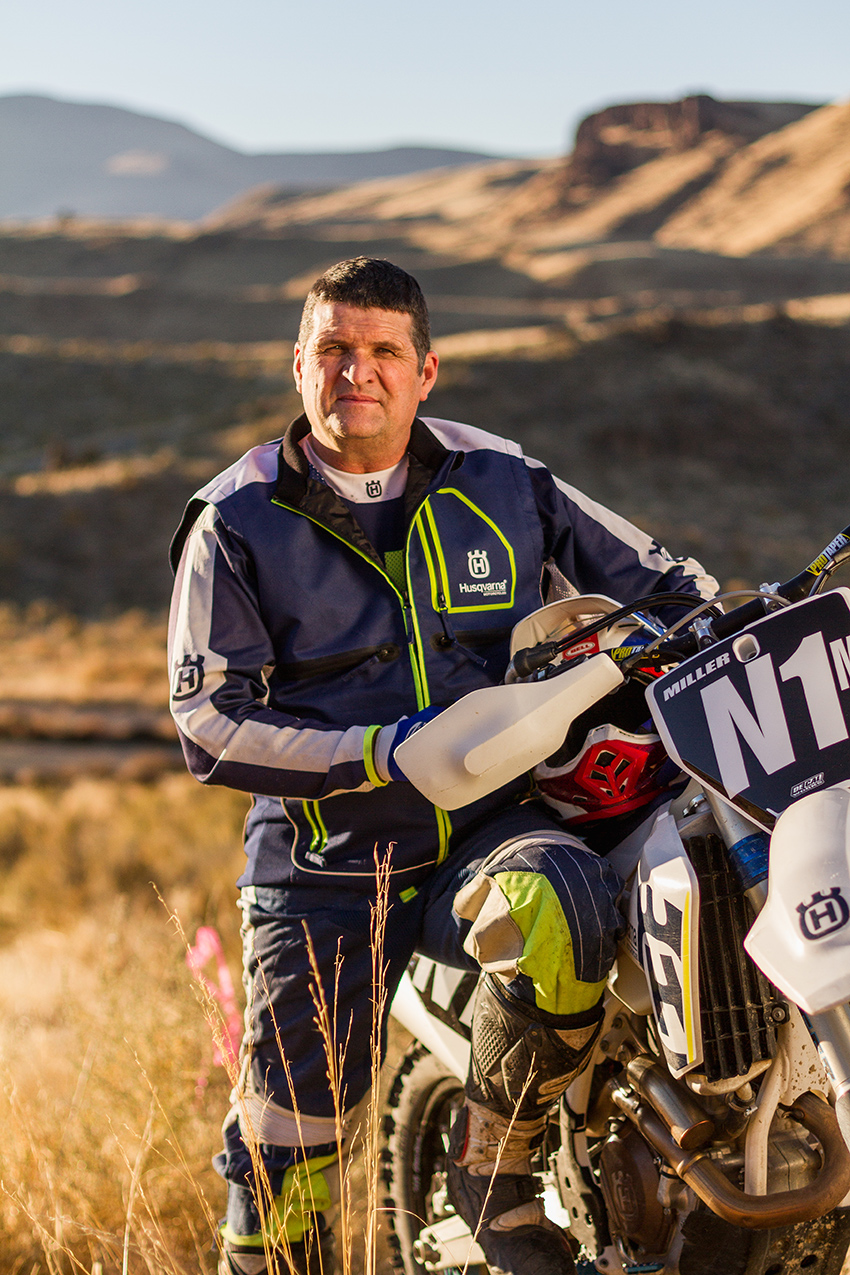American Motorcyclist December 2017
Some Assembly Required
Track Owners, Clubs And Promoters Prepare For 2018 Racing Season
By Ashley Price
Every year, from November to March when there isn’t a lot of racing or riding in much of the country, many competitors are left pondering when the snow will melt.
While some warmer states in the South and along the West Coast host races during “the off season,” there are far fewer competition events compared to the summer months.
But race organizers are not idle during the winter. Day after day is spent organizing calendars, communicating with sponsors, laying out courses and ensuring that AMA members get to compete at the best facilities and events.
In 2017, the AMA sanctioned nearly 2,000 amateur and pro-am events and series in the United States, but that would not have been possible without the year-round dedication of track organizers.
With the 2018 racing season quickly approaching, hundreds of hours of preparation have already been clocked behind the scenes. Whether setting up and testing scoring technology, communicating with sponsors, filling out paperwork, printing wristbands, prepping the track, hanging flyers or tackling any number of other jobs, these clubs, track owners and promoters are driven by the need to give AMA members top quality racing events and lifelong memories of racing with their families and friends.

Sam Gammon, Victory Sports president. Photo by Picture Perfect Photography
Scheduling And Promoting
For 32 years, Victory Sports, a race promoter in Blountville, Tenn., has been organizing and hosting some of the largest amateur motocross events in the country.
Rather than owning or putting on races at one specific track, Victory Sports spends the off season drawing attention to the 75 to 85 events it hosts, such as the Tennessee Pro National, an AMA Amateur National Regional Qualifier, the Top Gun Showdown and other AMA featured events.
Sam Gammon, Victory Sports president, and his sister Jane Gammon, Victory Sports office manager, know the ins and outs of what it takes to put together a great motocross event.
The Gammons work with their team of about 100 employees to schedule events, collaborate with sponsors and schedule advertising, among many other obligations.
But according to Sam, preparing a coordinated schedule with the many tracks and organizations they work with is the most important focus in the off season.

The goal is to make sure the various events they promote don’t overlap. This means racers won’t have to choose between two events, which can reduce rider turnout.
“Getting the upcoming calendar prepared is the most important thing I think I work on when we aren’t racing,” Sam said. “For example, we have to make six different series work on the same calendar and coordinate it with all the different tracks and staff, as well.”
After spending months working out a schedule, the Gammons then focus on sponsorships and making sure races will be staffed.
“We have to make six different series work on the same calendar and coordinate it with all the different tracks and staff.”
According to Sam, they average 400 riders daily at each of their events, but have had as many as 1,450 competitors at a single race.
Double checking that there are enough people to run an event and that those people are qualified is crucial to the event’s success.
For Victory Sports, the winter season is mainly spent organizing and preparing larger aspects of a race, then executing those preparations just a few weeks before the event is supposed to take place.
“We don’t really have an off season though,” Sam said. “There are fewer races from October to early November, but this time is spent preparing for banquets and getting ready for the indoor winter series.”
Their busy schedule doesn’t allow the Gammons much time to rest, so they also take personal time to manage stress and avoid illness.
Still, the Gammons and the Victory Sports team are willing to do everything to stage the great racing events they are known for producing.
“I feel that I am very blessed to be one of the few people that loves their job,” Sam said. “My team and I are very proud of the work that we do. We are always putting 100 percent effort into whatever we are doing.”

Jeff Miller, SIDRA president. Photo by Tobin Rogers
Prepping The Course
When it comes to getting ready for a season of racing in off-road disciplines like enduros and hare scrambles, things can be a little different than preparing for a motocross or road race.
Most motorcycle races take place on a closed track on private property. Many times the facility is owned by the group hosting the race.
But most off-road races—especially those in the West—take place on public, state and federally owned land.
For groups like the Southwestern Idaho Desert Racing Association, the off season is dedicated to getting access to this land. Without access, no races could be held.
Jeff Miller has been working as the SIDRA president for a number of years and he maintains that his No. 1 obligation in the winter months is ensuring access to host races.
Made up of seven clubs in the Southwestern portion of Idaho, SIDRA has been an association for more than 40 years and began sanctioning events with the AMA in 2017.
According to Miller, becoming a part of the AMA was crucial for SIDRA in helping with land use and other legal matters they face when trying to host a race.
“The AMA has really had our back this past year when we were trying to get access to land,” Miller said. “[The AMA] is like a one-stop shop for everything race related. [They] have better insurance and liability than we could ever get and are an incredible source of knowledge for us when we have questions or issues, like land access and [avoiding] sage grouse migration.”
“The AMA has really had our back this past year when we were trying to get access to land.”
Miller said that getting permission to use certain areas of land for races is a six-month process, at best. It sometimes takes more than six months for state parks to grant access, which is why the off season is vital to SIDRA’s success during the race season.
There are many other obligations, as well.
“I am in constant contact with our seven clubs making sure that they are getting paperwork done and are on the correct timeline,” Miller said. “I’m also making sure our equipment is working, laying out different potential courses to propose to the [U.S. Bureau of Land Management], talking to local sponsors, working out the rulebook—all sorts of stuff takes up my time.”
Although Miller devotes a large amount of his time to being SIDRA president, he does not get paid for the position. He credits his passion and long history in racing for his dedication to keep working.
“You have to have a desire for racing, and to put on races, to work year-round,” Miller said. “Seeing the competition, families coming together and just the camaraderie of the sport—it’s just not like any other sport or even any other kind of racing. That’s what makes these long hours worth it.”

Karen, Tony, Clayton and Cortni Miller of Freestone Raceway. Photo by Anne Marie D’Arcy
Teamwork Makes The Dream Work
Getting paperwork, planning a schedule and prepping the track are all very important things to work on to stage great races, but Tony and Karen Miller of Freestone Raceway in Wortham, Texas, claim that their years of success are based on their consistent teamwork as a family.
When Tony Miller opened Freestone in 2000, he had no idea of the work and obstacles that would be ahead of him and the track.
“He does everything,” his wife, Karen, said. “Nobody knows how to run this place and keep track of everything like he does. I had no clue about all the work he did.”
Together, with their two children Cortni and Clayton, the Millers spend the off season dividing the workload, with each doing his or her part to organize and prepare for the coming season of racing.
Cortni spends her time talking with sponsors and doing public relations work for the track, while Clayton updates the website and does any other special jobs that are asked of him, like maintaining the track.
Tony responds to emails and helps Karen with timelines. He also makes sure the paperwork is done properly.
“There is so much that goes into it,” Karen said. “We all have our jobs and know what we have to do to get the job done. Being able to rely on each other is what makes this work.”
According to Karen, there are so many small details to remember and keep track of that it would be impossible for someone to do everything on his or her own.
Activities such as getting trophies, ordering graphics for them, checking electronics, maintaining track equipment and printing wristbands are accomplished only because of the preparation and hard work of the entire family.
Without the off- season, the Millers wouldn’t have the success they do running massive races like the Texas Winter Series and AMA-featured events. The Millers even hosted a round of the Lucas Oil Pro Motocross series from 2007 to 2012 and were named AMA Motocross Organizer of the Year in 2015.
“I wouldn’t really call it much of an off season,” Karen joked. “We work around the clock all year long, but I wouldn’t want to be doing it with anyone else but my family. They are the reason we can keep Tony’s dream of running the track alive. All the hard work is worth it just for that.”

